This week a group of us supers from Detroit got away to play golf at Camargo and Holston Hills. I think we all learned a lot on this tour. Every club should MAKE their supers get out and study the great golf courses.
Holston Hills is maybe
the best Donald Ross golf course there is.

1st Tee.
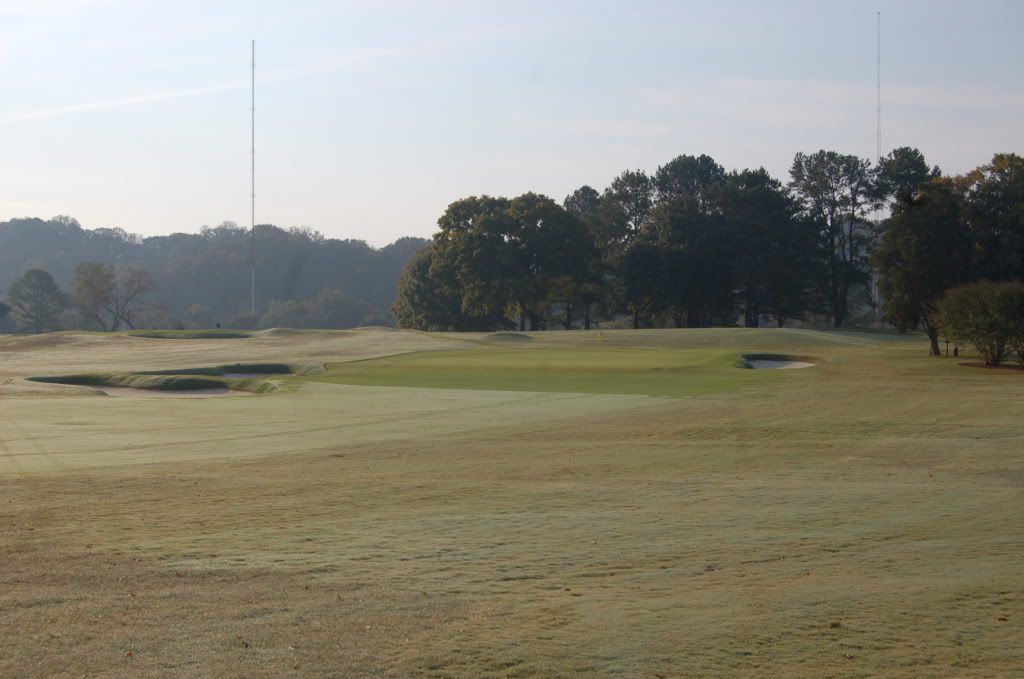
This side view of the green shows that Ross opens with a steep back to front sloping green.
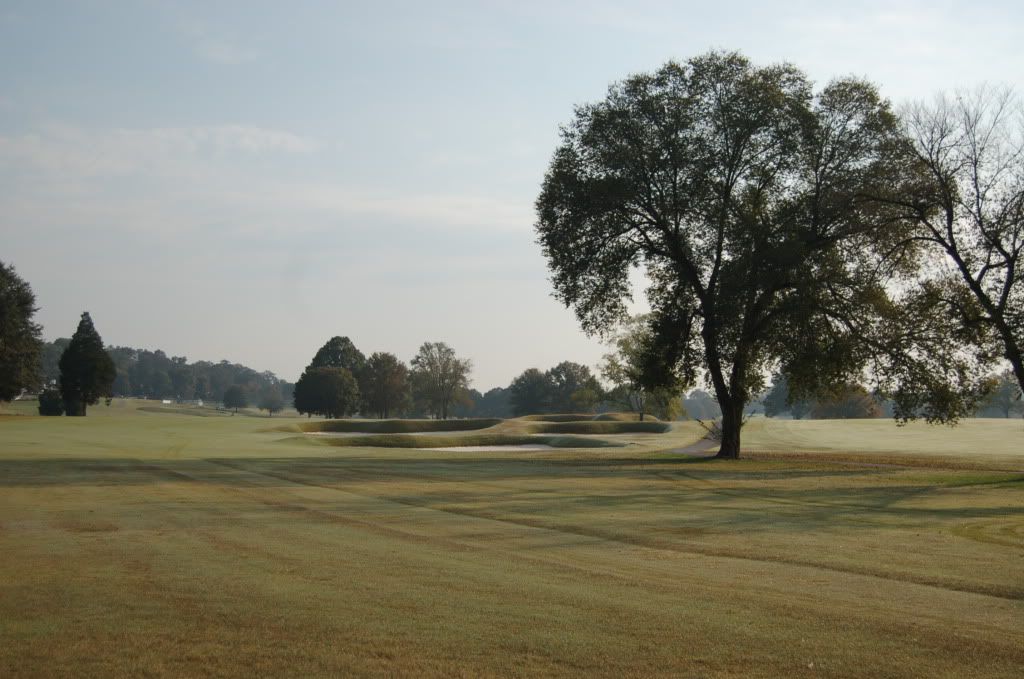
Fairway bunkering on 3. Note how the elevations of the rear bunkers are set to within inches of where they need to be so that you know they are all there. And you can admire their beauty too. You will see this kind of brilliant engineering on every hole at Holston Hills.
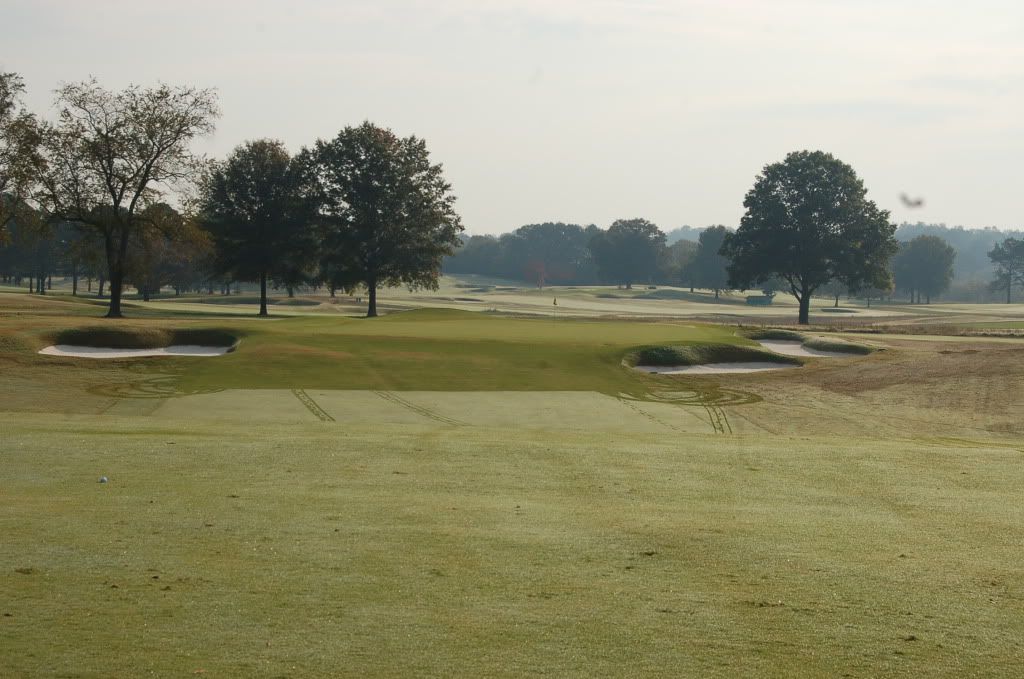
3 approach over a valley in front of the green. Note the absence of trees behind the green here. This makes it a much more difficult little shot to gauge with no backdrop. And notice the view that you have looking strait down another hole on the golf course. How cool is that?
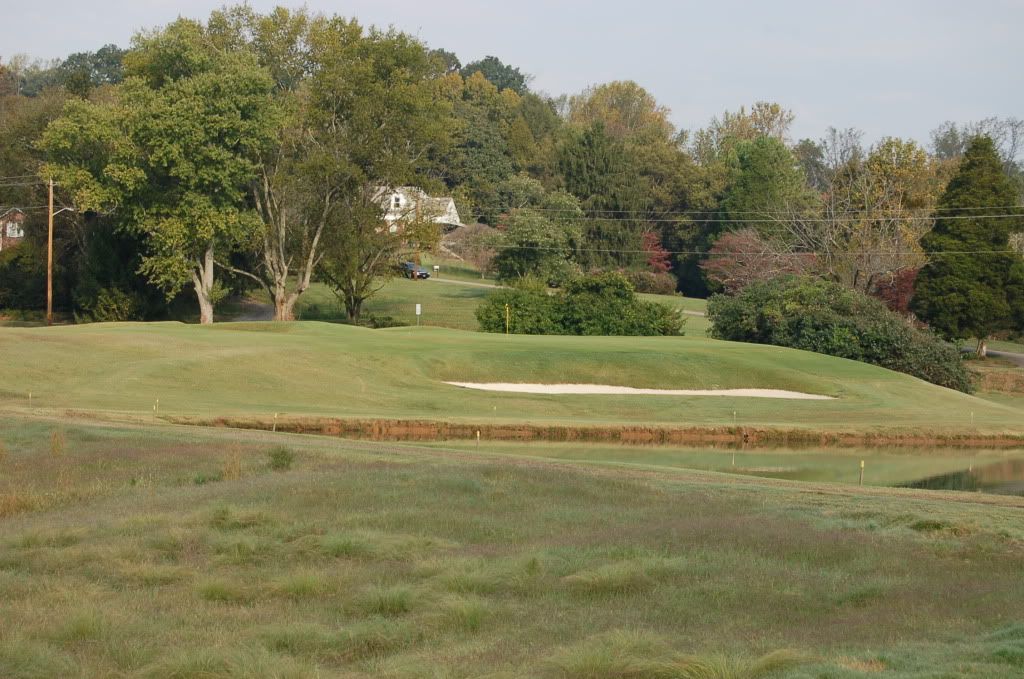
4 green. Just a very simple strait forward par 3 with gentle putting contours. But if you miss the green youíre in trouble.
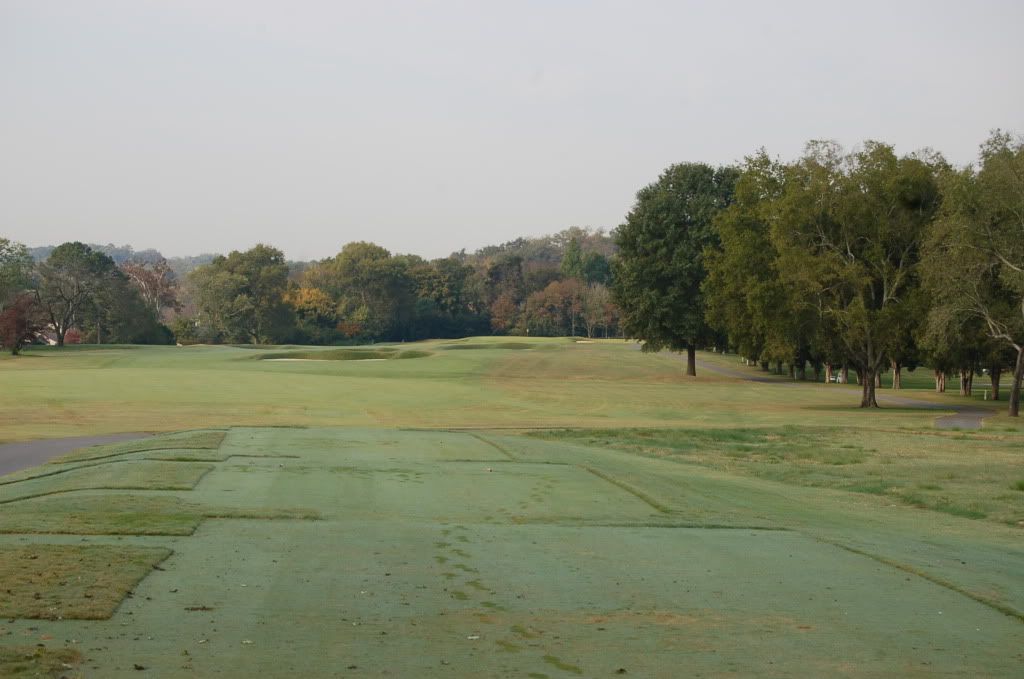
The 5th hole. Here we begin to encounter the significant centerline bunkering that we will face on over half of the remaining holes. And most of these bunkers are at distances very much in play - even with modern equipment. Greenkeeper Ryan Blair has the faces of the bunkers groomed perfectly for the ball to kick and release to the bunker floor. Also of note: the entrance to these bunkers is not all ramped up to deflect balls from rolling in - another Holston Hills distinctive.
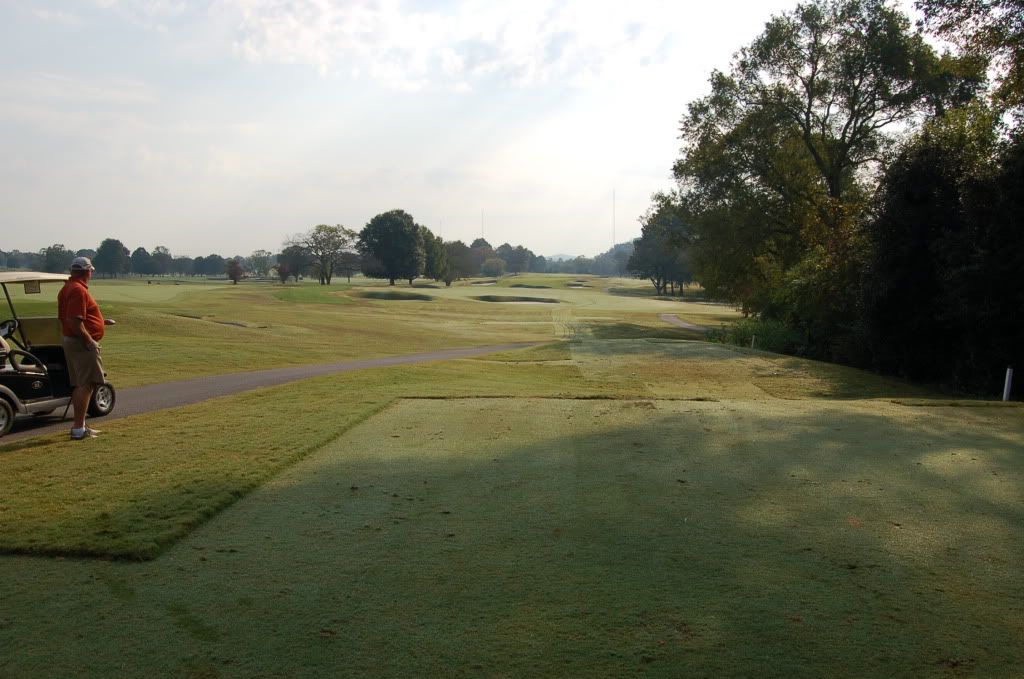
6 Tee. What a view! Holston Hills asks you to keep your cart on the paths and observe the 90 degree rule. This bares mention because I doubt that you could otherwise maintain healthy grass on these kinds of holes where there is so much bunkering in the middle of the corridors. I mean if carts were allowed to meander all down the middle of these holes they might wear the turf out around the fairway bunkering. I think every architect that promotes this kind of bunkering would do well to add a path system. And he should urge the club to institute a cart etiquette policy to go along with it. There is quite a bit of asphalt on Holston Hills, but it is needed because of the way it is bunkered. I would add that it does not interfere with your sight lines.
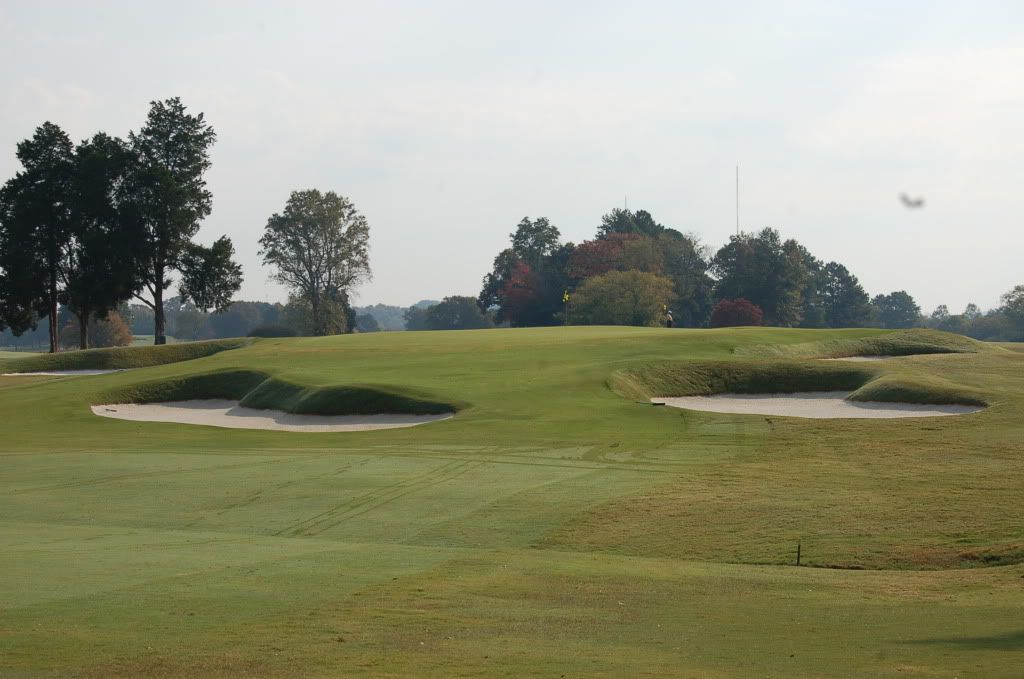
6 approach. Amazing how Ross finds all the knolls on a piece of property to place his greens, and then he manages to build a route around it all. The routing at Holston Hills is perfect.
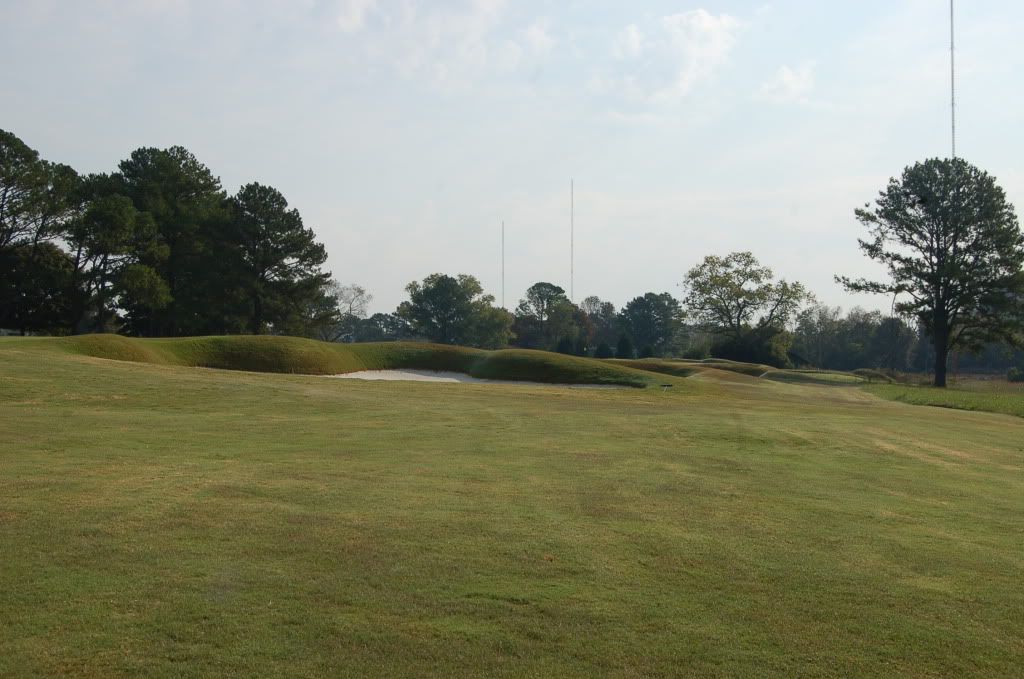
7th hole. I think this shot was taken from the rough beyond the lower fairway. The upper fairway is to the left of this shot. The upper fairway is definitely the option to take, because you have less bunkering to manage on your second shot.
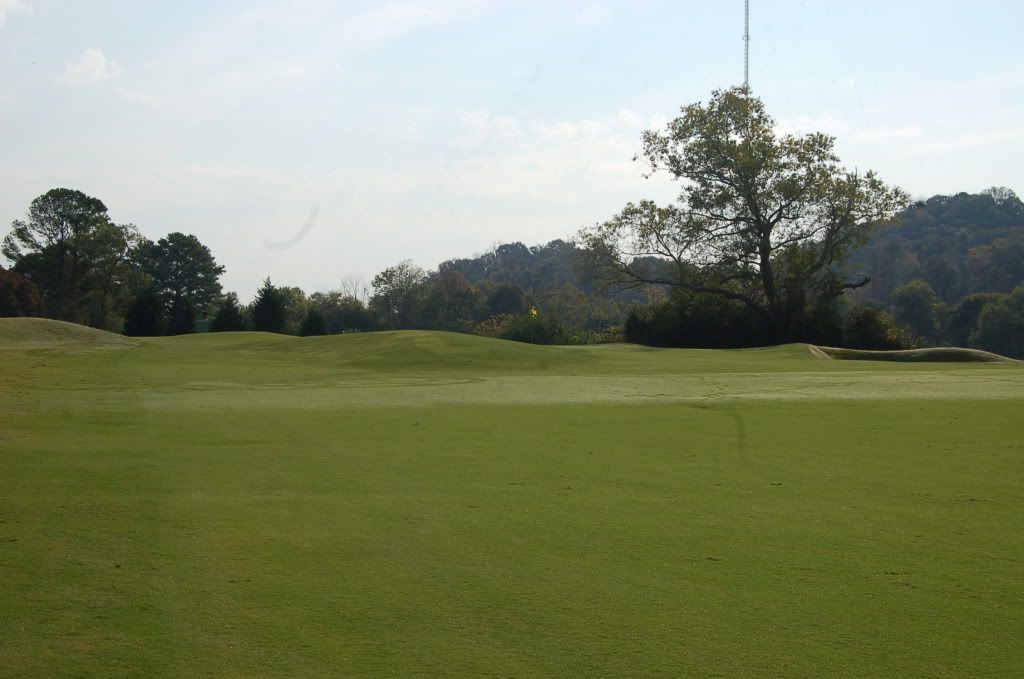
However, from the upper fairway the contours of the green are obscured and blocked by this mounding here. Good luck rolling one in for an Eagle attempt. Of note: all of the green surrounds at Holston Hills are groomed very closely over some fairly steep angles. In the north you would have to plant bentgrass on this kind of a grassing scheme around greens, but that would be much harder to maintain than the bermuda grass that they have here. I guess thatís why some of the best Ross greens are in the south?
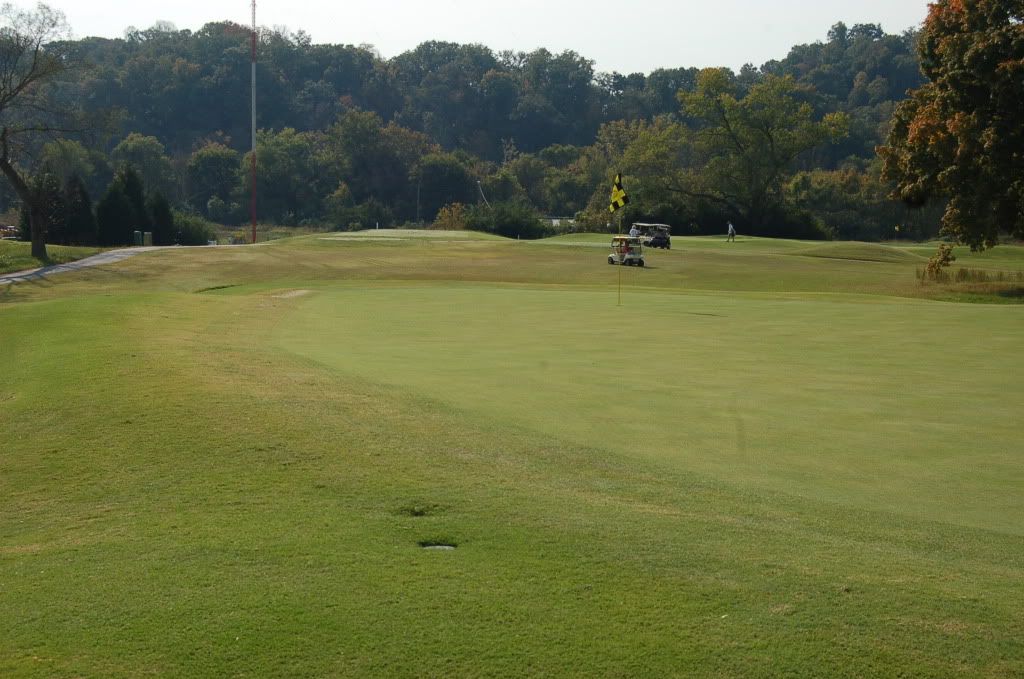
The V shaped 8th green. When the pin is in the front here you have a much narrower pad to land than when the pin is located in the widened back portion. But if you play beyond the pin you are putting downhill. What a wonderfully simple and potent strategy for a short hole.
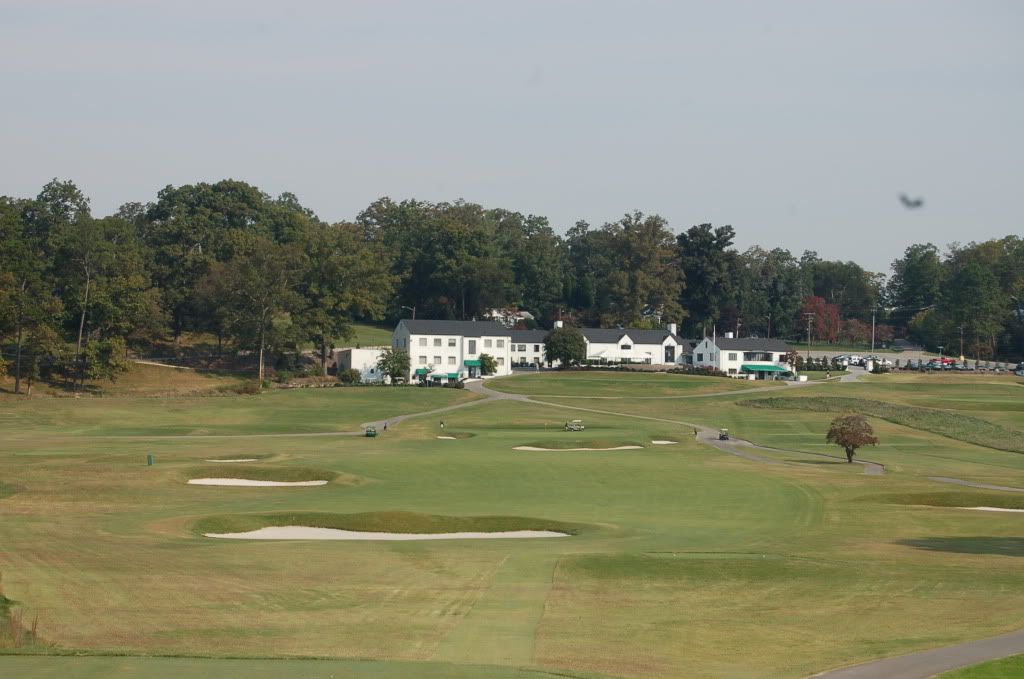
Nine tee. This was my personal best hole on the front nine. Not a particularly difficult hole through the green. It is nice when you make the turn with a good hole behind you - it gives you a greater anticipation for the next nine.

The tenth hole.
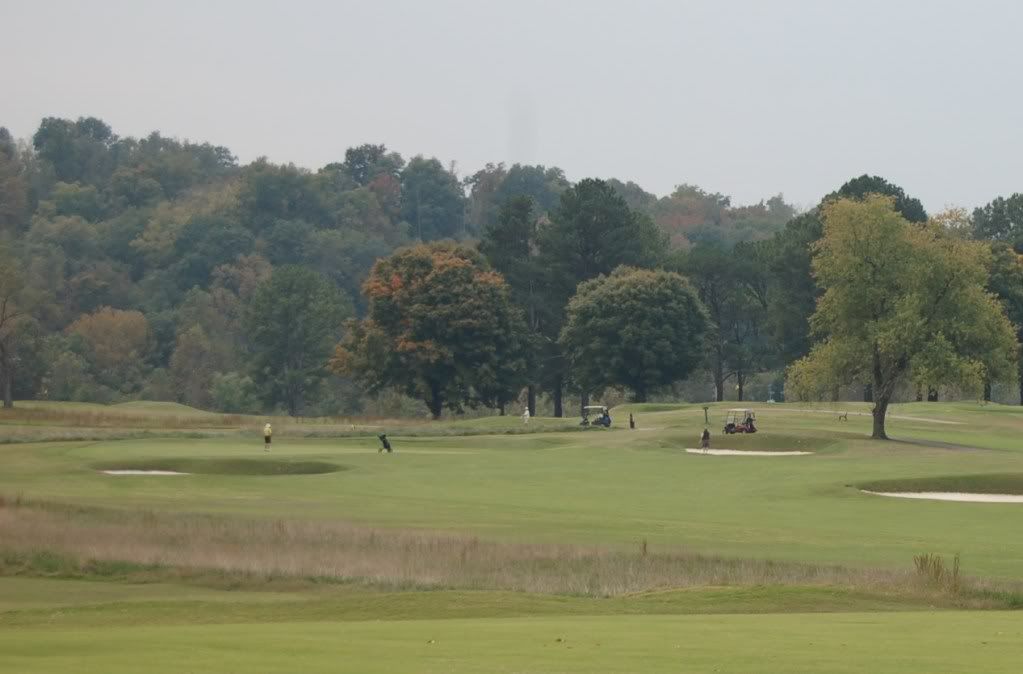
The green on 10 is cut into a hillside to obscure the putting surface from the right side of the hole. You can see it better in this shot taken from 18. I donít think I have ever seen this kind of Ross green anywhere else.
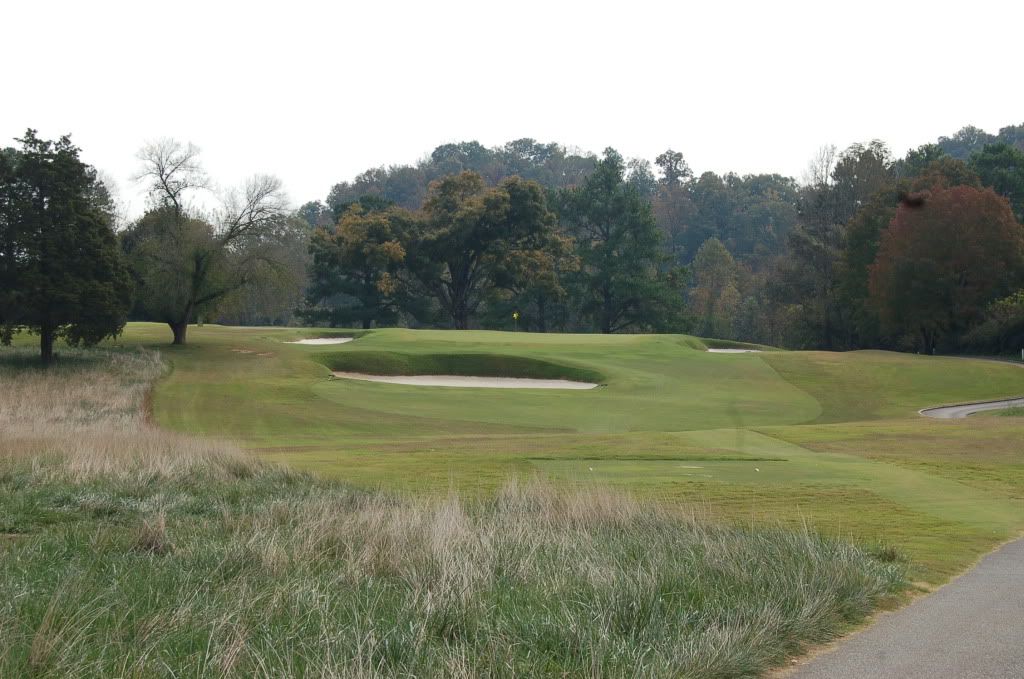
The mid-length par 3 11th hole. The green here feels more sloped to me than what we encountered on most of the front nine greens. In fact, through the entire home stretch that was my impression: that the back nine greens are more wily. But I suppose that may be just a first-round impression?
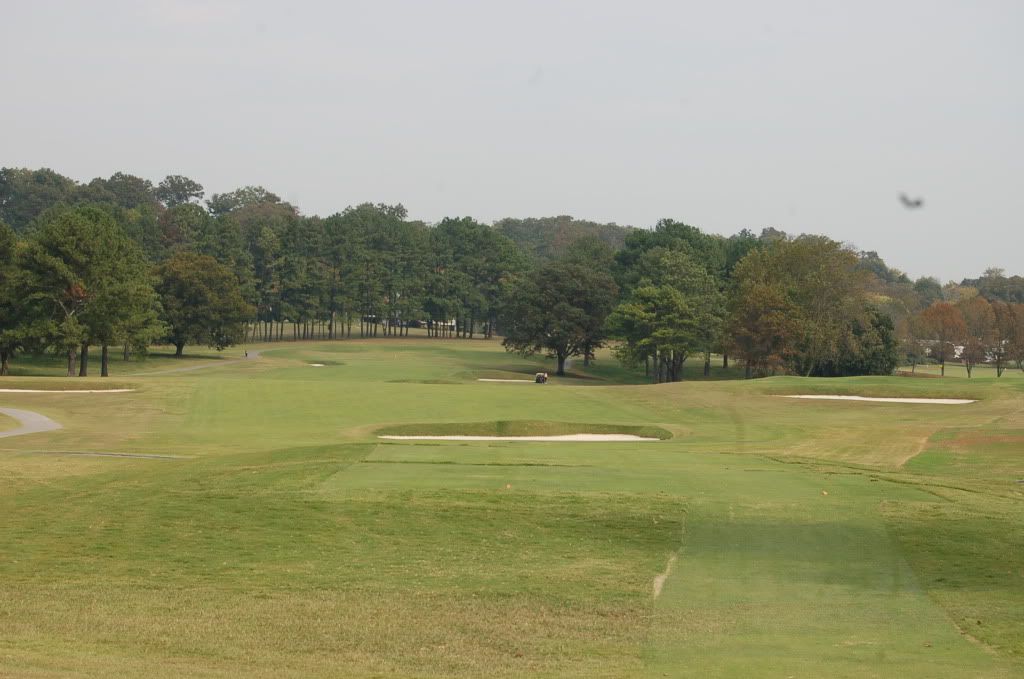
12th hole. Everything is right in front of you on this hole. In my opinion this hole illustrates that you can have large trees on a golf course, provided they are beyond the opening of the holes.
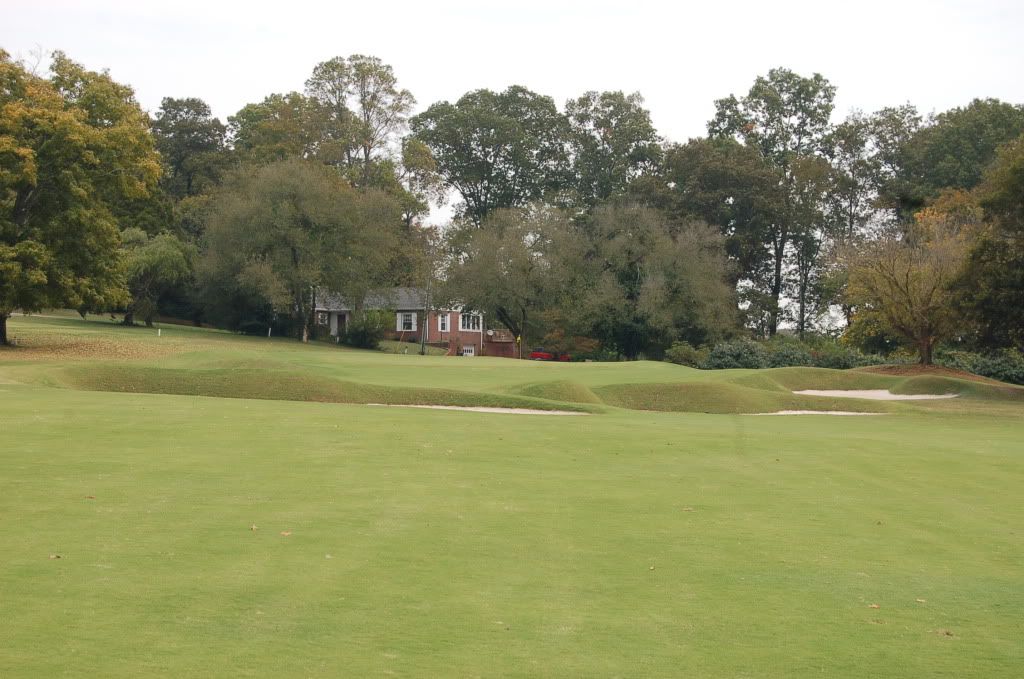
13th green. Stunning.
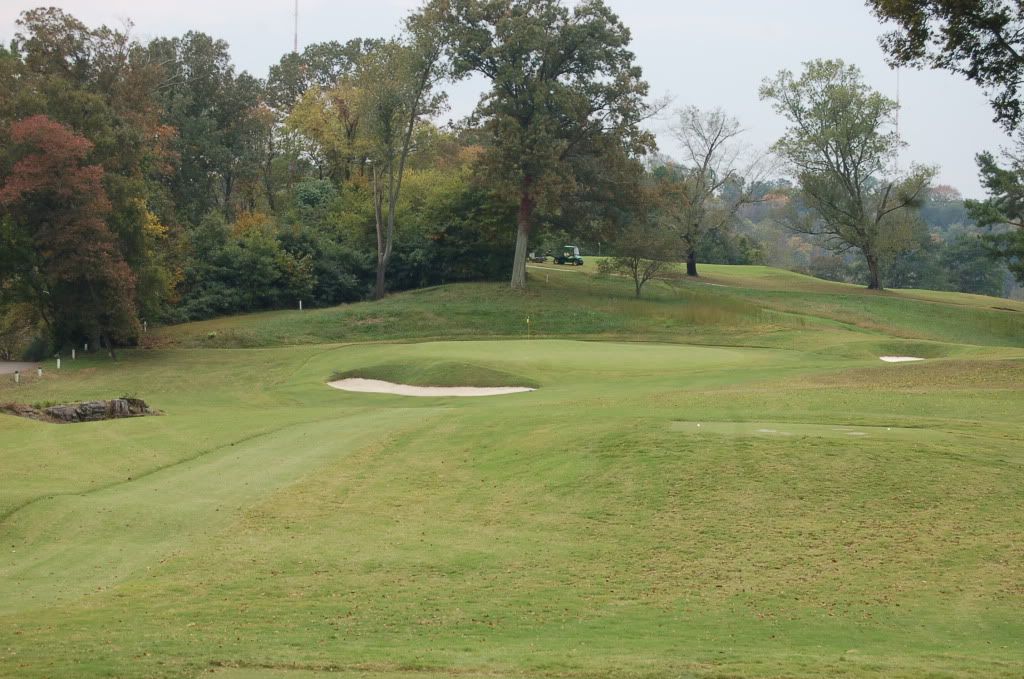
14 tee. Everyone in our group was short on this hole. Not sure if there was some mysterious wind down in this hollow? The green is very steeply sloped.
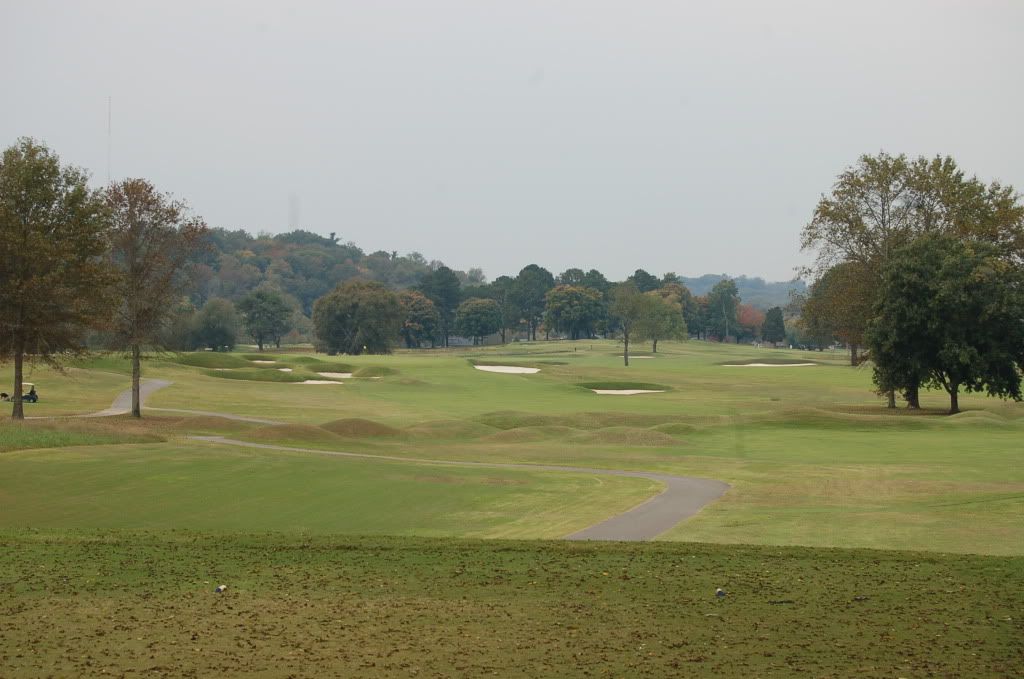
The awe inspiring view from 15 tee.
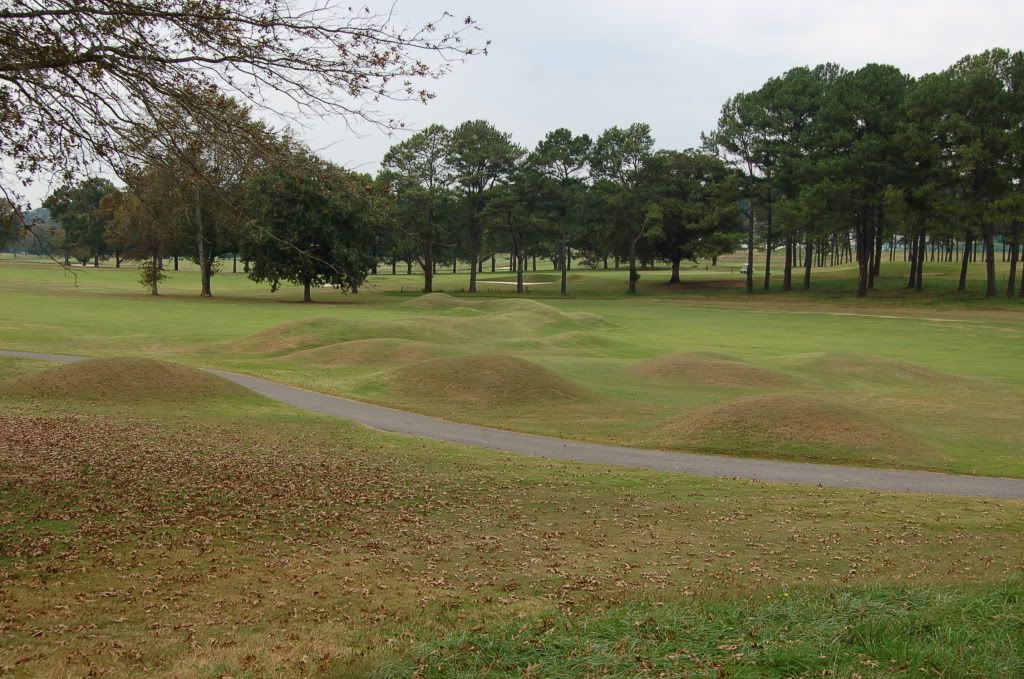
A side view of the mounds. I know it is often said that Ross was traveling so much that he couldnít have spent too much time on his golf courses. But he must have been really good at conveying exactly what he wanted to his construction supervisors because these kinds of features really have a distinct look to them that just shouts Donald Ross.
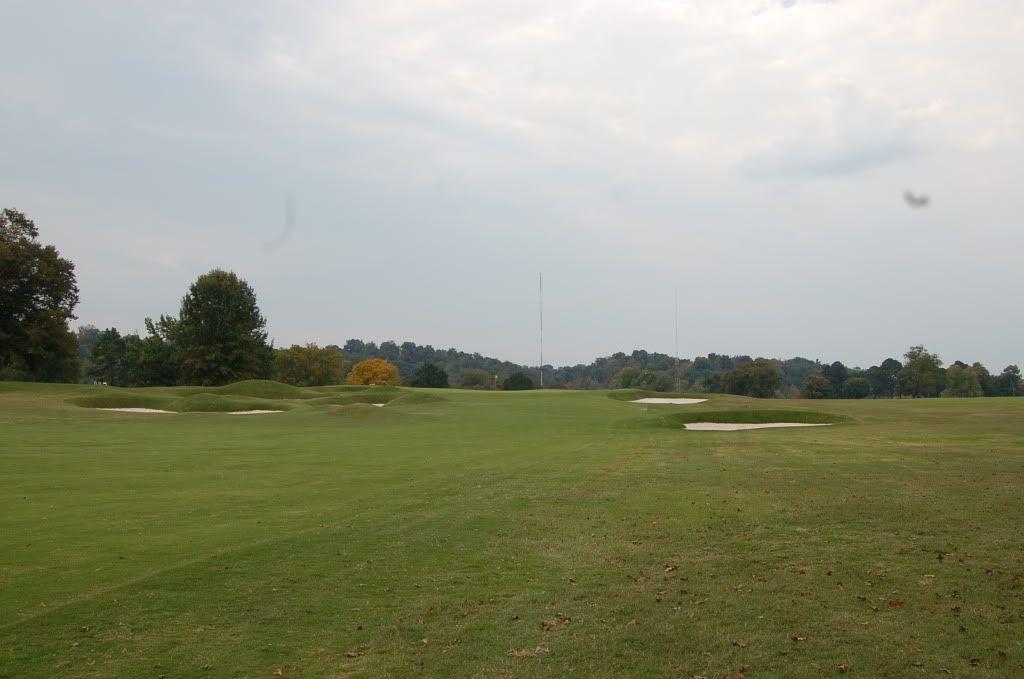
Hitting beyond the mounds isnít really that hard, but there is a lot of trouble lurking on the fiercely guarded second shot.
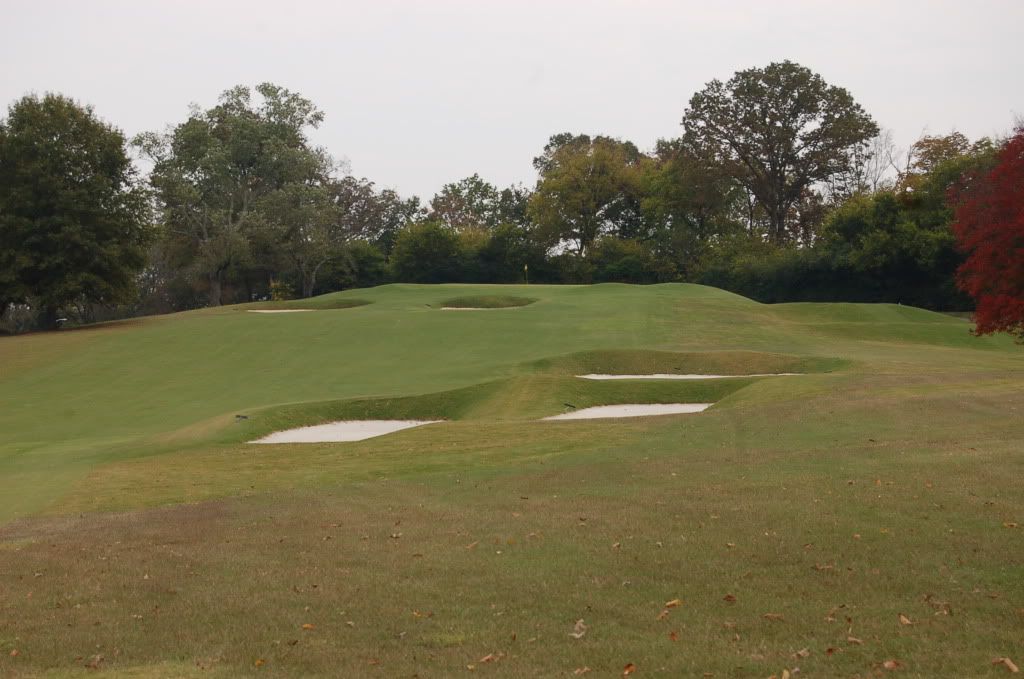
305 yard par 4 16th hole. All uphill. Imagine this hole with no trees as a backdrop! Wow!
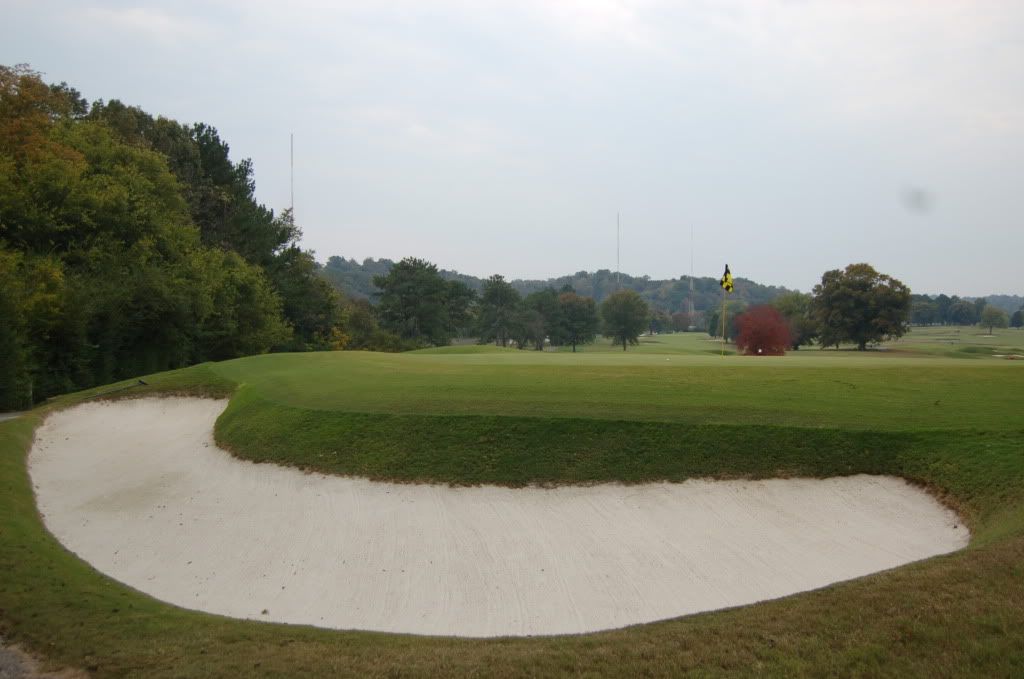
You definitely do not want to be long on your second shot here.
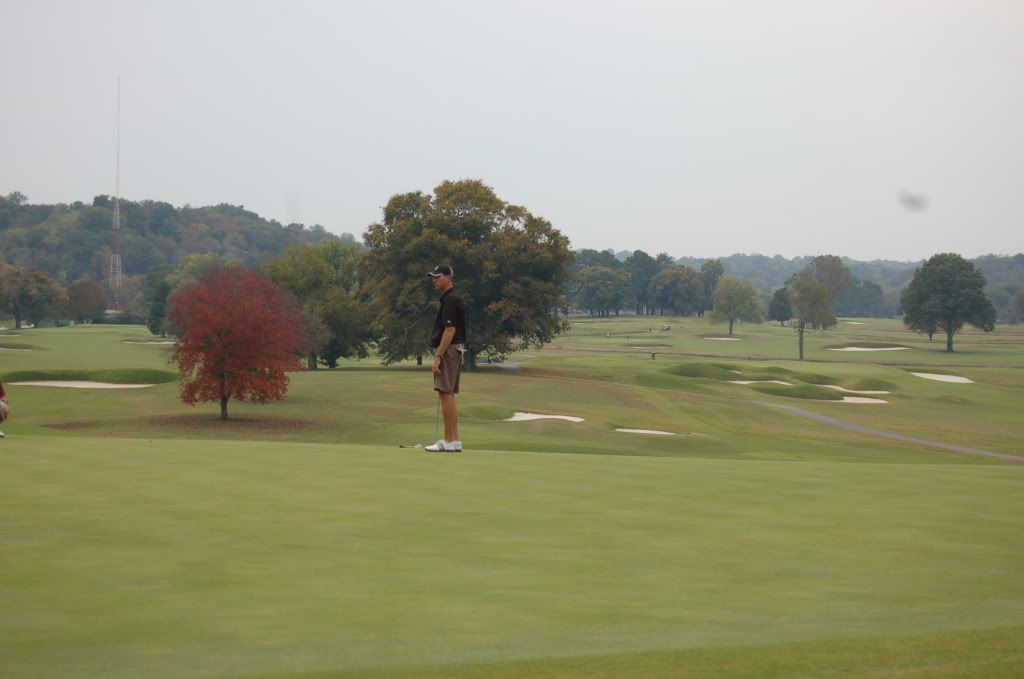
The views of the golf course are stunning from the 16th green. Brain Schweihofer is lining up a putt here.
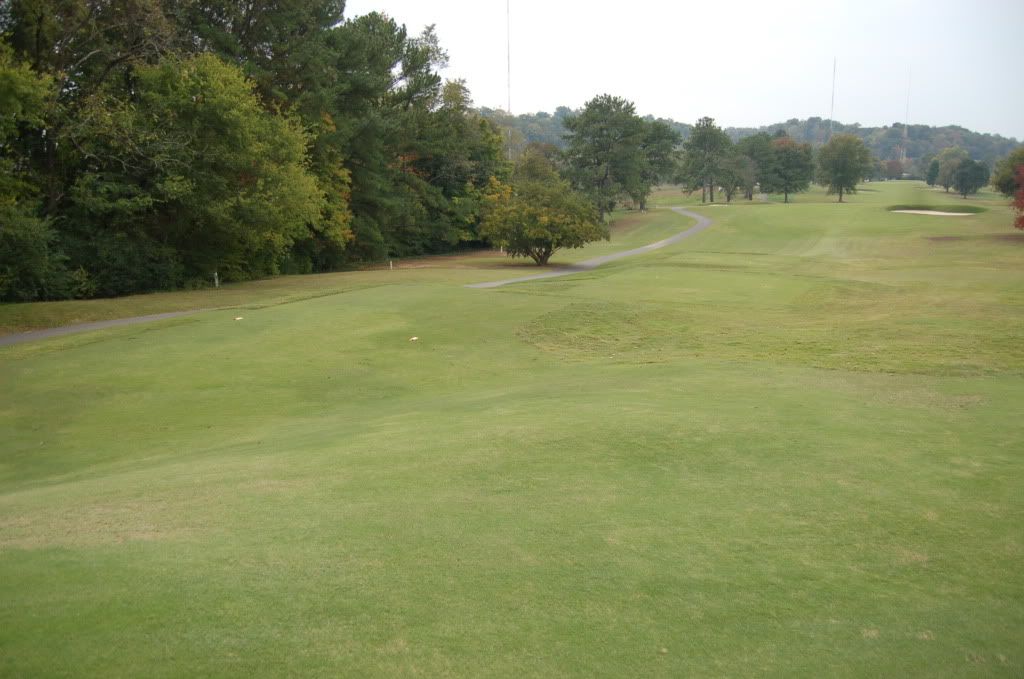
Notice the short cut bermuda between the green and tee. Old Elm is the only Ross course that has this in the north. Keeping bent all around a green like this is too difficult where you have significant rounds of golf played, and thatís probably why Old Elm is one of the only clubs in the north with these kinds of green to tee cuts - they donít have the traffic to wear it out. With bermuda however, your short cut options are almost limitless.
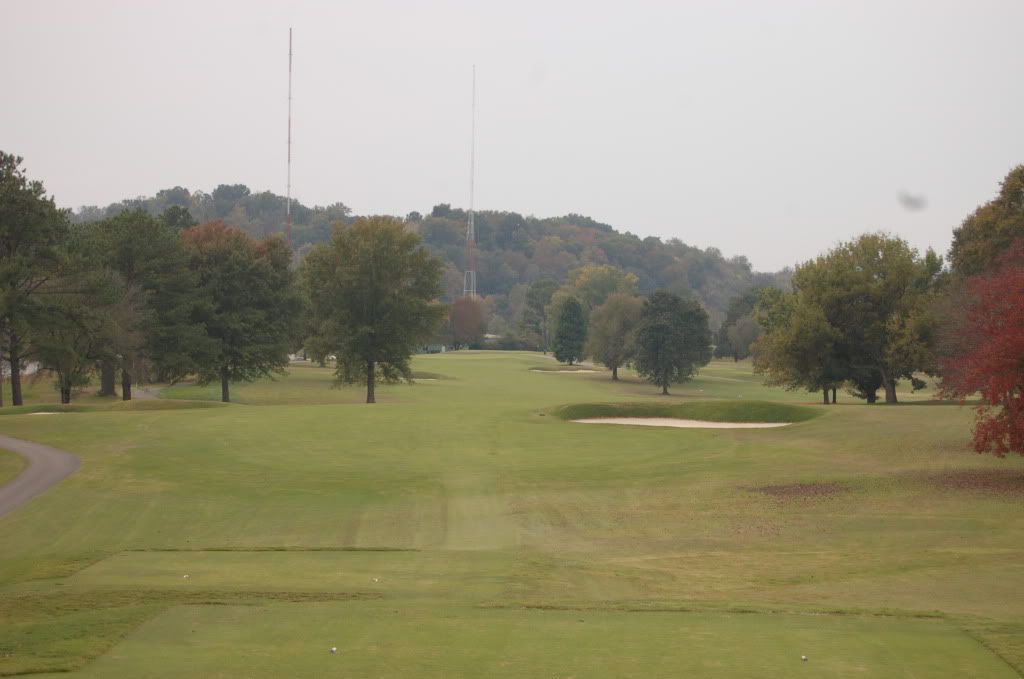
The long 17th hole.

The finishing hole.
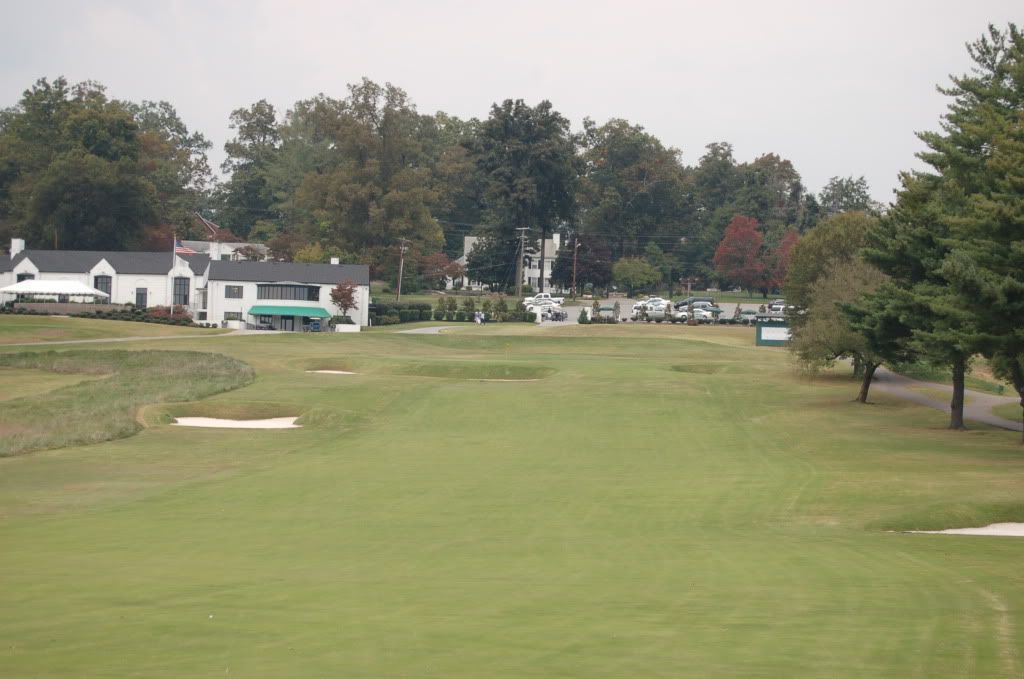
The green on 18 is fairly shallow and steep. I can imagine that many rounds have been decided here by rolling one way past the hole.